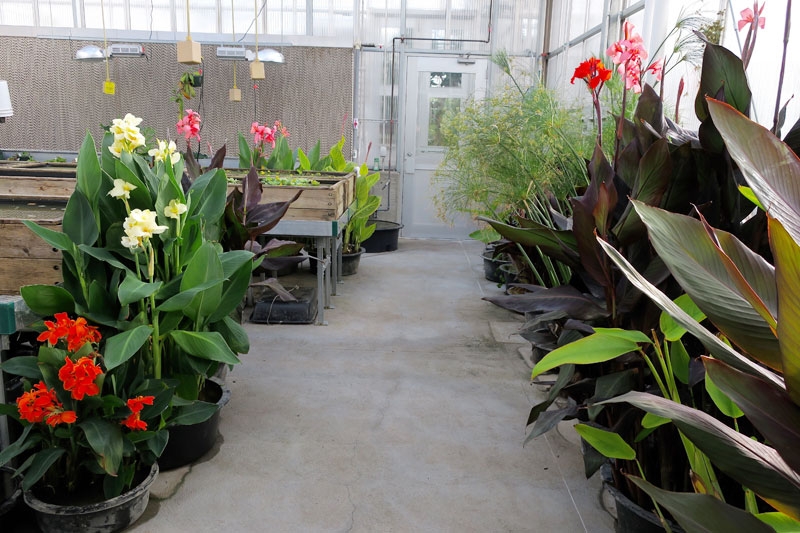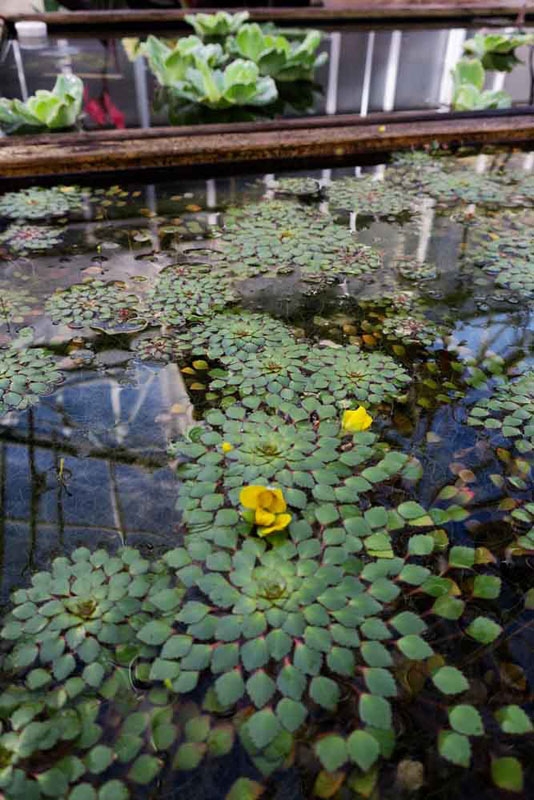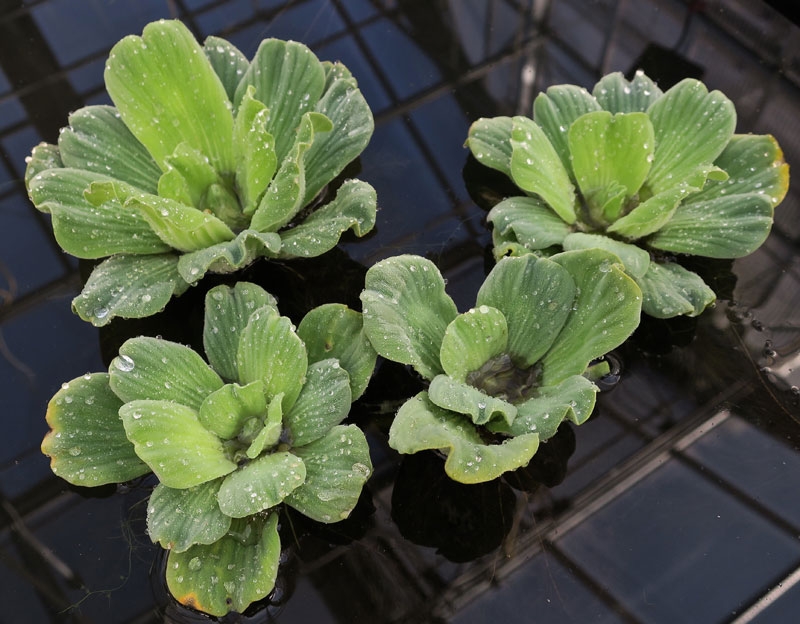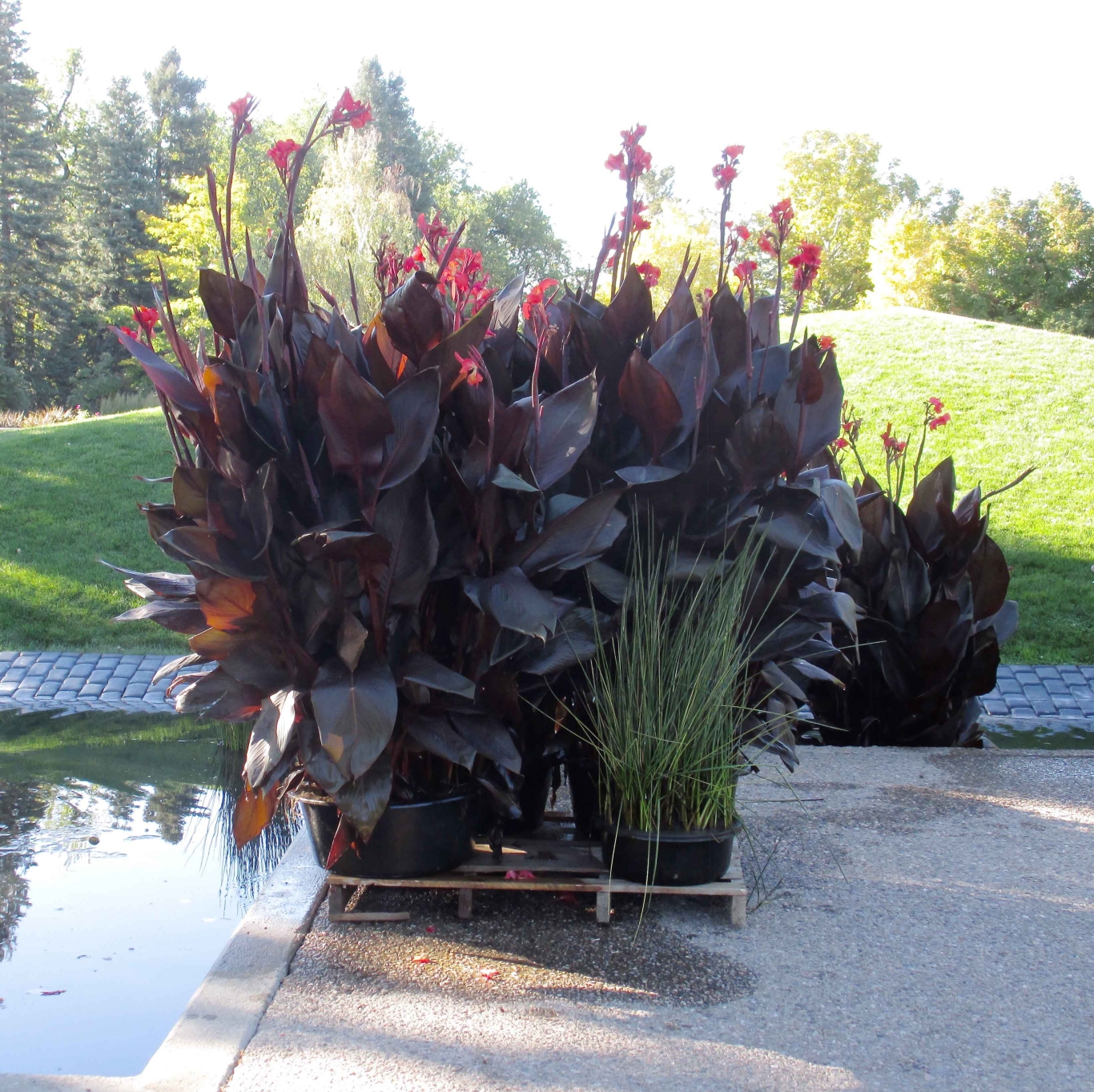Autumn in the Water Gardens
It is hard to believe that the summer months are already behind us! With the arrival of fall, our water garden team begins the work of preparing our pond plantings for the winter months. Throughout October, staff and volunteers were found winterizing each of the following aquatic plant groups.
Hardy Waterlilies
The majority of the waterlilies (Nymphaea hybrids) grown and displayed at the Gardens are winter hardy, meaning they will survive the cold winter temperatures and will grow as perennials here in Denver. These plants are left in their containers and the foliage is cut back in late October. They will go into dormancy with new growth appearing the following spring. As long as the root systems of hardy waterlilies do not freeze solid or dry out, most do very well over the colder months and actually benefit from these months of dormancy.
Tropical Waterlilies
Just as the annuals throughout the gardens are removed each fall, so are the tropical waterlilies found throughout our water gardens. Each plant is pulled out of the water and removed from its container. The soil is then searched for tubers and these are washed, labeled and stored in bags of water in a fridge maintained at 55°F. The plants are then composted, unless the hybrid is more rare, in which case it is brought into the aquatics greenhouse and placed in a heated tub of water to grow throughout the winter months.
Hardy Marginal Plants
The term “marginal,” when used in water gardening, refers to plants found growing along the margins of a pond. These plants are also referred to as “emergent” with their foliage growing above the water line. Hardy marginal aquatic plants in our collection include Lotus (Nelumbo hybrids), pickerel plant (Pontederia cordata), cattail (Typha species), lizard’s tail (Saururus cernuus), powdery thalia (Thalia dealbata), aquatic iris (Iris virginica, I. versicolor, I. pseudacorus, and I. louisiana) and sweetflag (Acorus calamus).
To prepare our hardy marginal plants for the winter months, the foliage is cut back to just above the water line in mid- to late October. This is to prevent water from entering the plants’ root systems through the freshly cut stems, which could cause them to rot. The plants go into winter dormancy and will put up new growth the following spring. Our lotus plants are also screened with heavy black plastic netting in the fall to prevent Canada geese from eating the tubers, which they will do with gusto each spring if they can gain access to the containers!
Tropical Marginal Plants
Tropical marginal plants in our collection include cannas, taro (Colocasia), red-stemmed thalia (Thalia geniculata forma rheumoides), Egyptian papyrus (Cyperus papyrus), dwarf papyrus (Cyperus prolifer) and Aztec arrowhead (Sagittaria montevidensis).
At least one large plant of each tropical marginal hybrid is saved in our aquatics greenhouse. These will be divided the following spring and divisions will be potted up for that year’s displays as well as the spring plant sale.
Other Floating-Leaved Aquatic Plants
Aquatic plants in our collection which don’t fit into the above categories include floating-leaved species such as water hawthorn (Aponogeton distachyos), mosaic plant (Ludwigia sedioides) and Water Snowflakes (Nymphoides species). Water hawthorn is hardy here in Denver and is left out in the ponds year-round. It tends to go dormant in the hottest months of the year and looks its best in the fall and spring, when it produces white, vanilla-scented blooms that float on the water’s surface.
Mosaic plant is a tropical floating-leaved plant native to South America. It is grown in a heated tub in our greenhouse year-round and cuttings are taken in early summer for our displays. Therefore, the plants on display are simply composted in the fall.
Finally, water snowflakes vary in hardiness depending on the species. Most species grown here at the Gardens are brought indoor for the winter months. It should be noted that we do not grow or display Nymphoides peltata in the water gardens due its inclusion on the Colorado noxious weed list and its tendency to root into the containers of plants growing nearby.
Floating Plants
One floating plant species (an aquatic plant that floats on the water’s surface with its root system trailing freely in the water below) is included in our collection: water lettuce (Pistia stratiotes). This tropical species resembles a floating head of lettuce and is displayed each summer in small pools or water bowls throughout the gardens. It is composted each fall with a few plants saved in heated tubs in our aquatics greenhouse.
As the autumn colors fade, replaced by a snowy white landscape, our hardy plants will slumber peacefully outdoors while our tropicals cozy up to life in the greenhouse. Stay tuned for a final seasonal blog post about the water gardens during the winter months.




Add new comment